Aditi Avasthi
Improve Academic Query Resolution through BERT-based Question Extraction from Images
Apr 28, 2024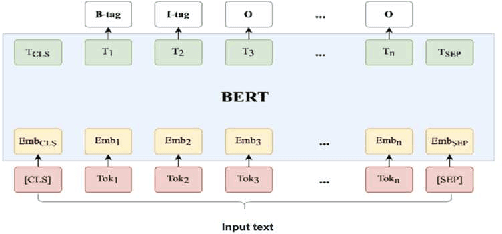

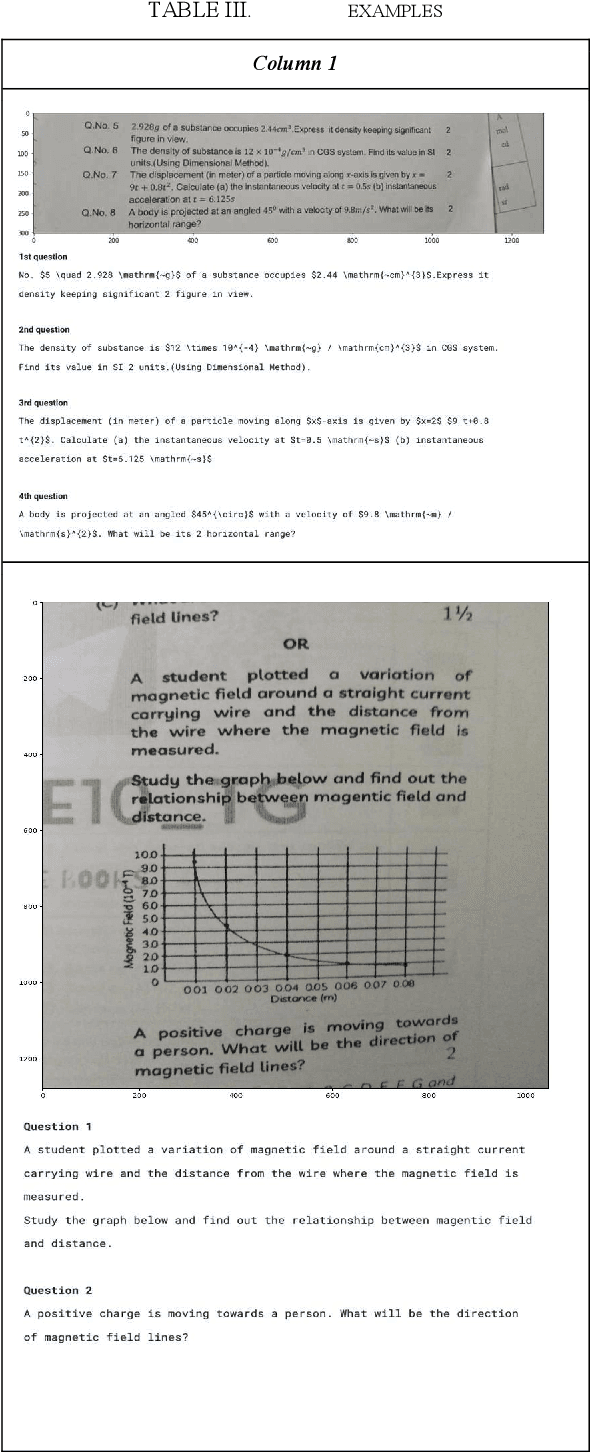
Abstract:Providing fast and accurate resolution to the student's query is an essential solution provided by Edtech organizations. This is generally provided with a chat-bot like interface to enable students to ask their doubts easily. One preferred format for student queries is images, as it allows students to capture and post questions without typing complex equations and information. However, this format also presents difficulties, as images may contain multiple questions or textual noise that lowers the accuracy of existing single-query answering solutions. In this paper, we propose a method for extracting questions from text or images using a BERT-based deep learning model and compare it to the other rule-based and layout-based methods. Our method aims to improve the accuracy and efficiency of student query resolution in Edtech organizations.
Towards Tractable Mathematical Reasoning: Challenges, Strategies, and Opportunities for Solving Math Word Problems
Oct 29, 2021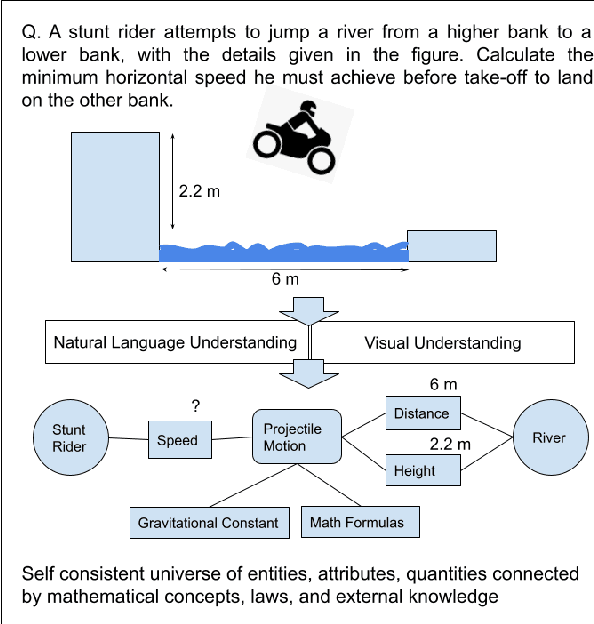

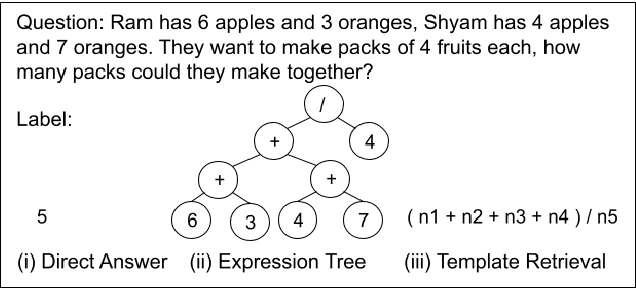
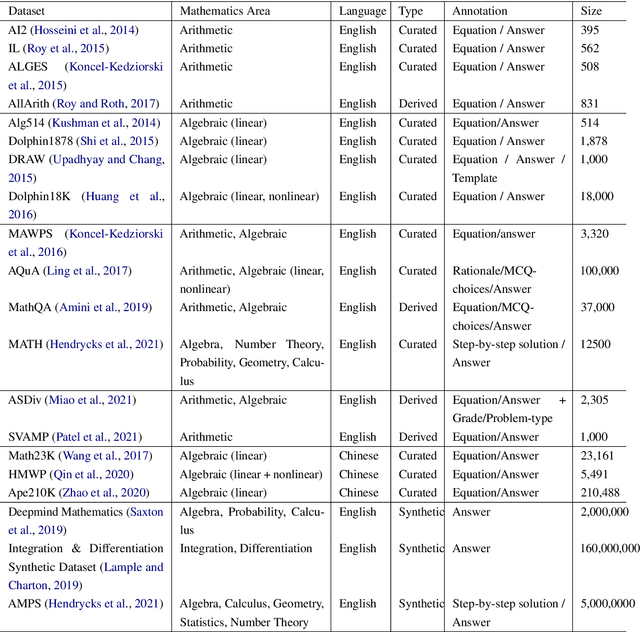
Abstract:Mathematical reasoning would be one of the next frontiers for artificial intelligence to make significant progress. The ongoing surge to solve math word problems (MWPs) and hence achieve better mathematical reasoning ability would continue to be a key line of research in the coming time. We inspect non-neural and neural methods to solve math word problems narrated in a natural language. We also highlight the ability of these methods to be generalizable, mathematically reasonable, interpretable, and explainable. Neural approaches dominate the current state of the art, and we survey them highlighting three strategies to MWP solving: (1) direct answer generation, (2) expression tree generation for inferring answers, and (3) template retrieval for answer computation. Moreover, we discuss technological approaches, review the evolution of intuitive design choices to solve MWPs, and examine them for mathematical reasoning ability. We finally identify several gaps that warrant the need for external knowledge and knowledge-infused learning, among several other opportunities in solving MWPs.
A framework for predicting, interpreting, and improving Learning Outcomes
Oct 12, 2020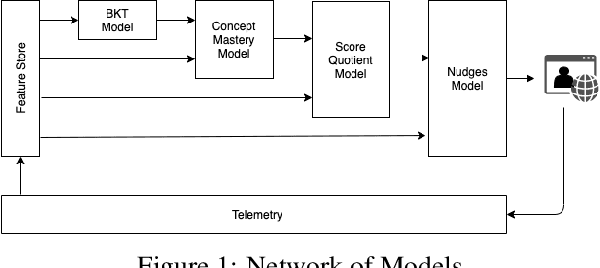

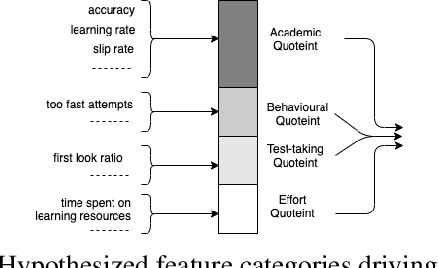
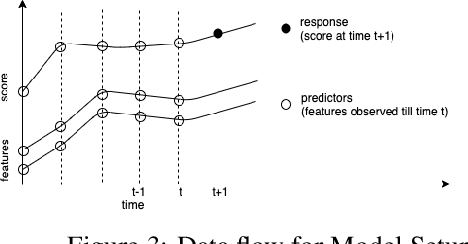
Abstract:It has long been recognized that academic success is a result of both cognitive and non-cognitive dimensions acting together. Consequently, any intelligent learning platform designed to improve learning outcomes (LOs) must provide actionable inputs to the learner in these dimensions. However, operationalizing such inputs in a production setting that is scalable is not trivial. We develop an Embibe Score Quotient model (ESQ) to predict test scores based on observed academic, behavioral and test-taking features of a student. ESQ can be used to predict the future scoring potential of a student as well as offer personalized learning nudges, both critical to improving LOs. Multiple machine learning models are evaluated for the prediction task. In order to provide meaningful feedback to the learner, individualized Shapley feature attributions for each feature are computed. Prediction intervals are obtained by applying non-parametric quantile regression, in an attempt to quantify the uncertainty in the predictions. We apply the above modelling strategy on a dataset consisting of more than a hundred million learner interactions on the Embibe learning platform. We observe that the Median Absolute Error between the observed and predicted scores is 4.58% across several user segments, and the correlation between predicted and observed responses is 0.93. Game-like what-if scenarios are played out to see the changes in LOs, on counterfactual examples. We briefly discuss how a rational agent can then apply an optimal policy to affect the learning outcomes by treating the above model like an Oracle.
 Add to Chrome
Add to Chrome Add to Firefox
Add to Firefox Add to Edge
Add to Edge